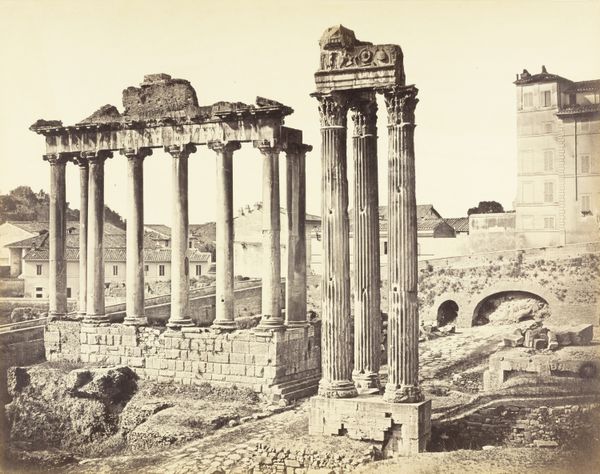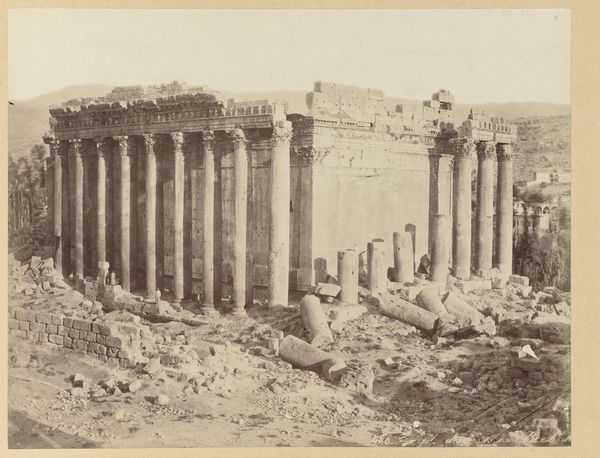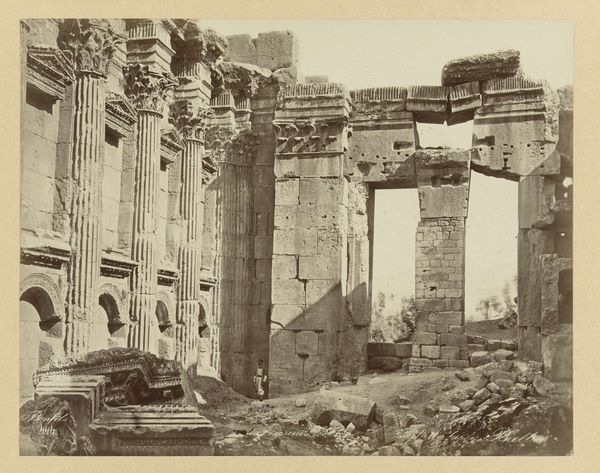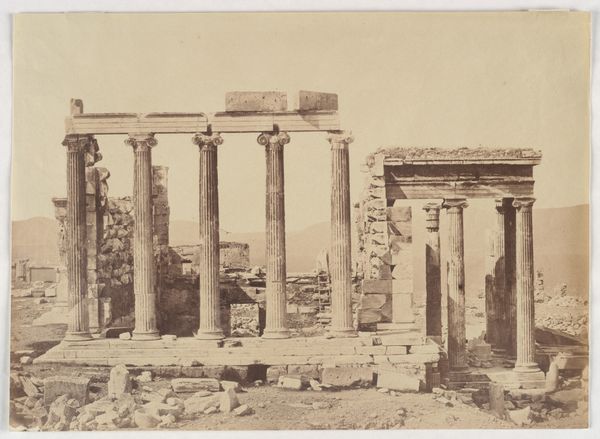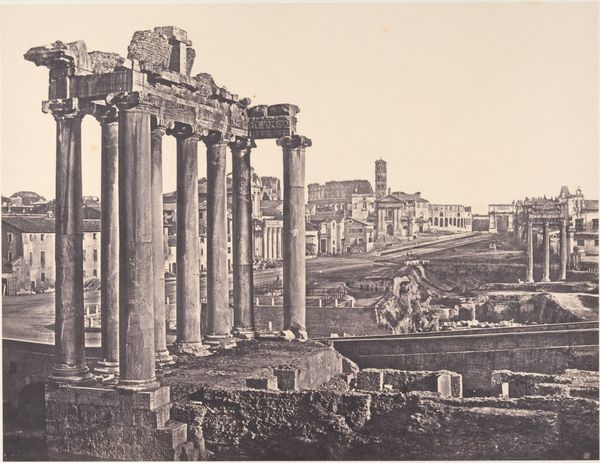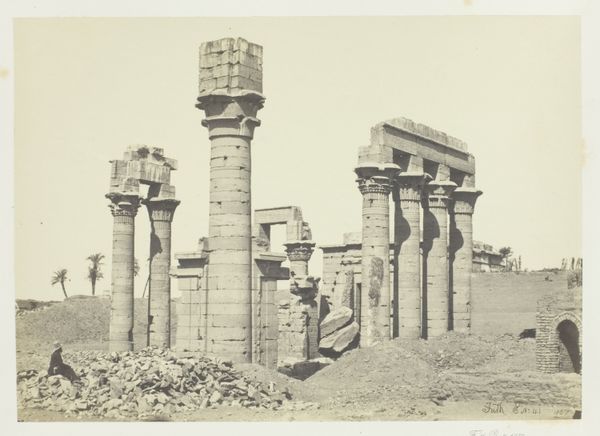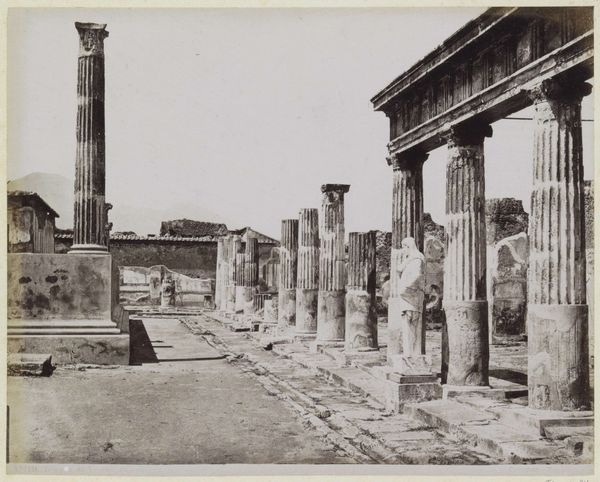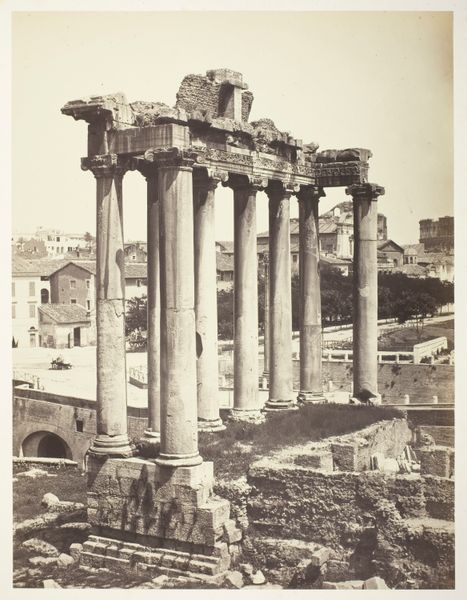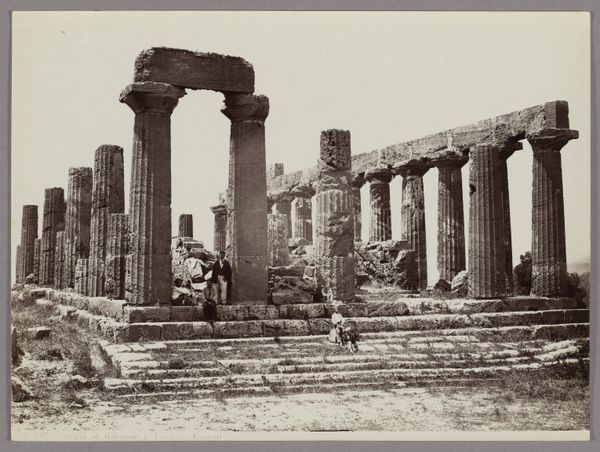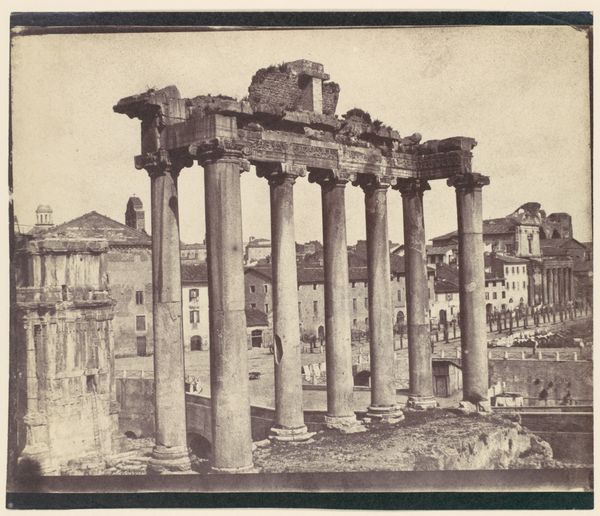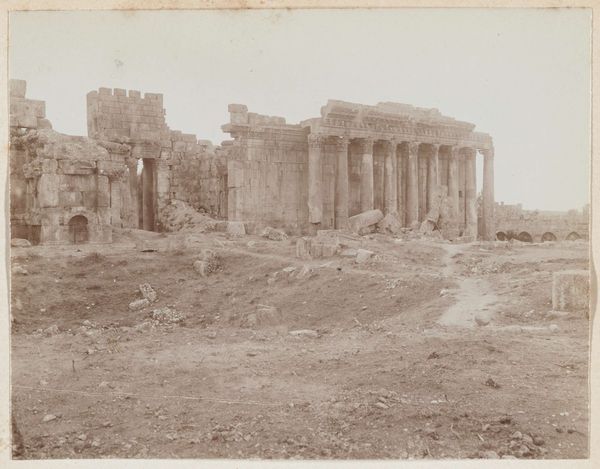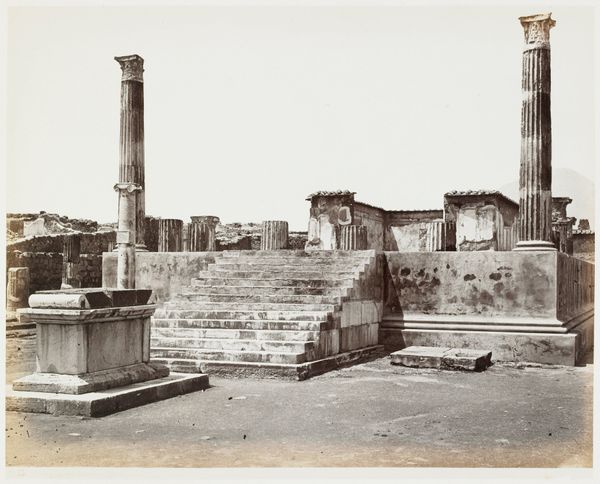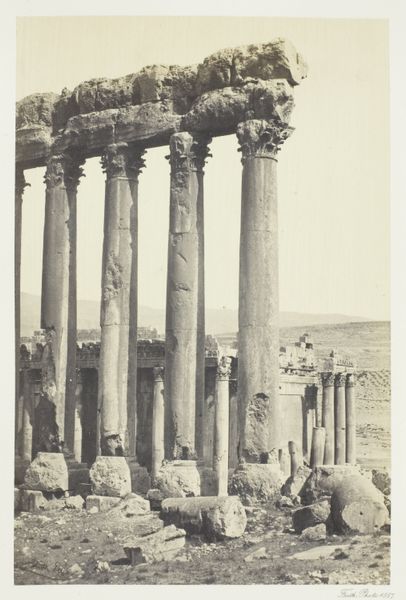
photography, site-specific
#
landscape
#
classical-realism
#
photography
#
ancient-mediterranean
#
site-specific
#
cityscape
Dimensions: height 366 mm, width 451 mm, height mm, width mm
Copyright: Rijks Museum: Open Domain
Editor: This is Paul Emile Placet's photograph, "Gezicht in het Forum Romanum, Rome," taken sometime between 1858 and 1863. It’s quite striking – this clash between the grandeur of the ruins and the ordinariness of the buildings behind them. What do you make of this image, thinking about the period in which it was created? Curator: It's crucial to recognize that this photograph wasn't just capturing a physical space; it was participating in a powerful cultural narrative. Photography, still a relatively new medium then, offered a seemingly objective record of the past, which fueled both scholarly interest and a growing tourism industry around Roman antiquity. Think about it – what purpose did these photographs serve in a time of immense social change and empire building? Editor: So it’s less about pure documentation and more about constructing a particular idea of Rome? Perhaps aligning the present with the prestige of a classical past? Curator: Precisely. The forum was not simply rediscovered. Its image and symbolic value were meticulously curated and then consumed by different groups – from art collectors and historians to everyday travelers. How do you think the photographer chose his vantage point and framed the shot? Editor: He chose a clear view of the temple remains but juxtaposed against domestic dwellings. Highlighting ruins as objects to consume as the world evolves around it? Curator: Yes, but also ask: what about the other remains excluded in this image? The Forum was and still is, vast and full of ruins. By choosing a partial view, the photographer actively shaped a particular visual experience of history for viewers and potential buyers. Editor: I see what you mean; it makes you wonder about what narratives are being left out! It gives me so much to think about – thanks! Curator: My pleasure. It’s all about understanding that these images are powerful artifacts shaped by social and cultural forces. The Roman Empire became a commercial spectacle in this photographic medium.
Comments
No comments
Be the first to comment and join the conversation on the ultimate creative platform.
